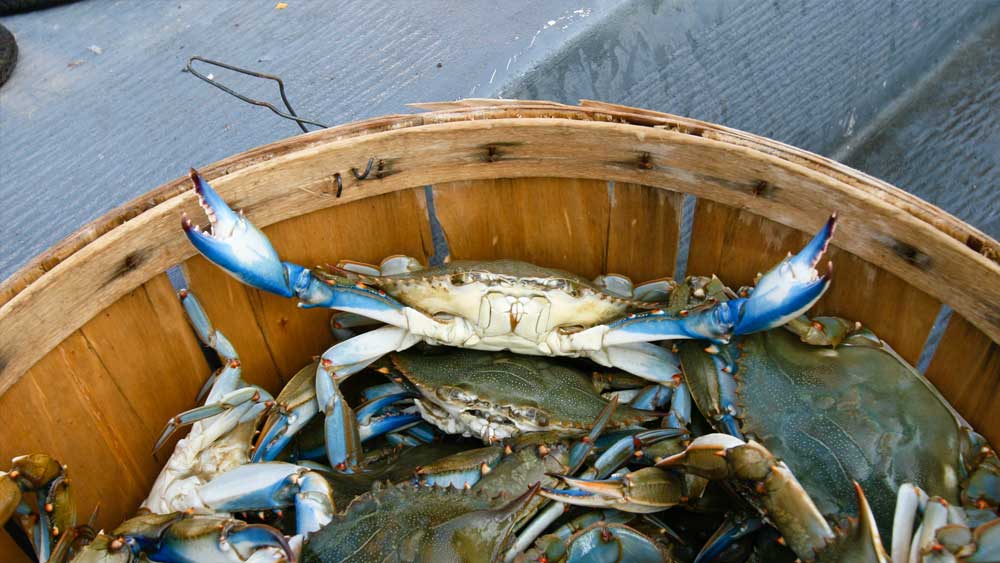Some customers are getting a bit crabby over current market conditions for seafood. Is the shortage on shellfish due to federal immigration politics, coronavirus, or something else?
As recently reported in the Chesapeake Bay Journal,
But why are Chesapeake Bay blue crab harvesters shorthanded, asking for more immigrant visas?
So, the coronavirus pandemic is curtailing crab harvesting, and the Maryland crab harvesting season begins in April, which is just around the corner. So, what will happen if the Chesapeake Bay’s blue crabs (i.e., Callinectes sapidus) don’t get harvested at business-as-usual percentages? How would this affect the bay’s crab population?
Ironically, both crabs and many environmentalists are probably relieved that the Chesapeake Bay’s blue crab population will not undergo the usual commercial watermen’s “harvest pressure.” This might allow these blue crabs to live longer, grow larger, and eventually get eaten by someone—but that someone might not be human, because many sea turtles (but not herbivorous green sea turtles) consume blue crabs.2
And how did God equip crab-eating sea turtles—like Kemp’s ridley turtles (Lepidochelys kempii) and loggerhead turtles (Caretta caretta)—to eat blue crabs?
Consider the large and powerful beak jaws of a crab-eating sea turtle. Its rigid beak can crush a crab’s shell and grind it up for swallowing.3 In other words, its anatomy is perfect for eating crabs. Who gets credit for the sea turtle’s food-ingesting anatomy? God does.
If God had not designed and constructed those turtles’ digestive systems to accommodate crabs, then crabs would have no dietary value for those turtles. Food must be ingestible to help anyone, plus its biochemical content must provide nutrition that is usable by the eater.
In other words, God shows His bioengineering genius by designing external and internal body parts that can digest certain foods, plus God designs and provides foods that can be collected for ingestion and digestion, all to the benefit of the eater. So useful food is no accident, either to a sea turtle or to a human!
Consequently, whatever you are eating—whether it be a Chesapeake blue crab or anything else that is nutritious—give thanks to God that the food is helping you to live another day.
In fact, the apostle Paul once used edible food as a proof of God’s caring providence, since He is the Creator Who equipped us to benefit from eating—and He provides us with food to eat.4
References
1. Cox, J. 2020. Chesapeake crab industry remains crippled by visa shortage, coronavirus. Chesapeake Bay Journal. 4(30).
2. Of course, earlier stages of a blue crab’s life cycle face predator risks from other animals: the larval stage is food for jellyfish, some small fish, and even shrimp; older crabs (especially during molting) are prey for larger fish, some birds (like diving ducks, as well as coastal marsh-dwelling birds, like herons and egrets), and some estuary mammals.
3. Wyneken, J. NOAA Technical Memorandum NMFS-SEFSC-470: The Anatomy of Sea Turtles. U.S. Department of Commerce. Miami, FL: National Marine Fisheries Service, 108-114.
4. 1 Timothy 4:4-5. See also Johnson, J. J. S. Our Daily Bread: How Food Proves God’s Providence. Acts & Facts. 40 (4): 8-9.
5. Acts 14:17.
*Dr. Johnson is Associate Professor of Apologetics and Chief Academic Officer at the Institute for Creation Research.




